With their vibrant orange plumage and melodious songs, orioles represent some of North America’s most cherished backyard visitors. These striking neotropical migrants bring color and joy to gardens each spring, prompting many enthusiastic birdwatchers to set out special feeders and treats. However, not all feeding practices benefit these beautiful birds. In fact, some common approaches can potentially harm orioles or disrupt their natural behaviors. This comprehensive guide explores the top ten ways to safely and responsibly feed orioles, ensuring both their well-being and your continued enjoyment of these spectacular avian visitors.
Understanding Oriole Dietary Needs
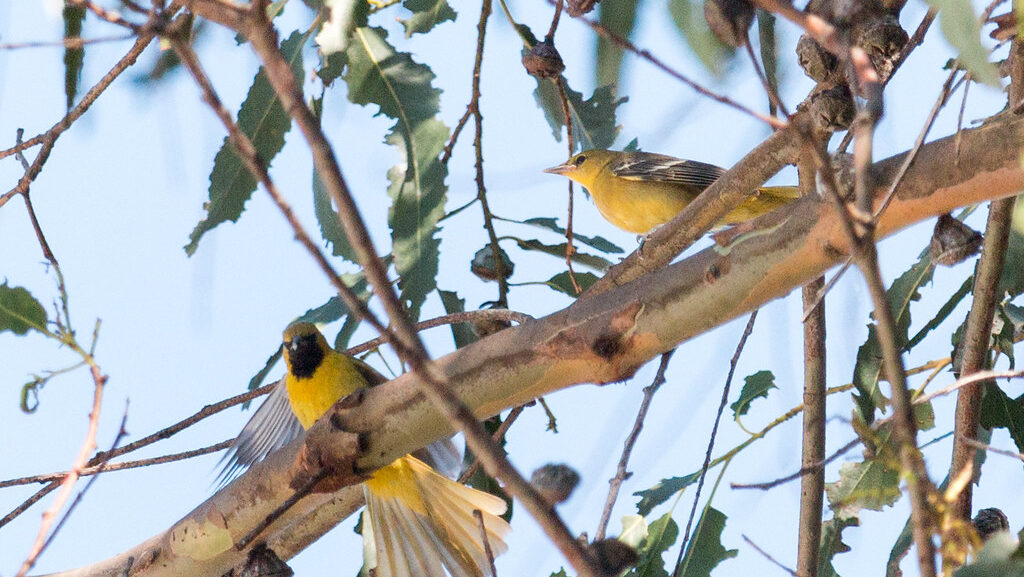
Orioles have specific nutritional requirements that differ significantly from many other backyard birds. In their natural habitat, these birds primarily consume insects, nectar, and fruits, with their diet shifting seasonally based on availability and breeding status. During migration and breeding season, orioles require high-energy foods rich in natural sugars and proteins. Adult orioles feed extensively on protein-rich insects when raising young, supplementing with fruity fare throughout the season. Understanding these natural dietary patterns helps inform better feeding practices that support rather than undermine oriole health, ensuring your offerings complement rather than replace their natural foraging behaviors.
Choosing the Right Oriole Feeder Design
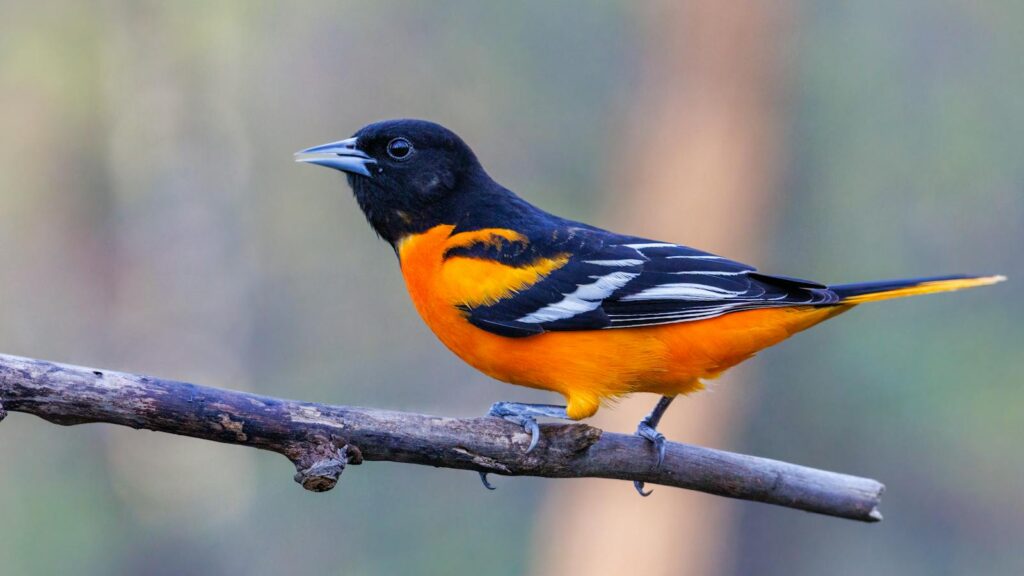
Not all bird feeders are suitable for orioles, whose feeding habits and physical adaptations require specialized equipment. The ideal oriole feeder features orange coloration (which naturally attracts these birds), multiple feeding ports allowing simultaneous visits, and separate compartments for different food types. Look for feeders with bee guards that prevent insects from contaminating nectar while still allowing orioles’ specialized bills easy access. Drainage holes are essential to prevent mold growth in fruit compartments, while deep nectar reservoirs reduce the frequency of refills. Select feeders with sturdy perches that support the birds’ weight comfortably, and prioritize designs that disassemble easily for thorough cleaning—a critical factor in preventing disease transmission.
Preparing Safe Homemade Nectar
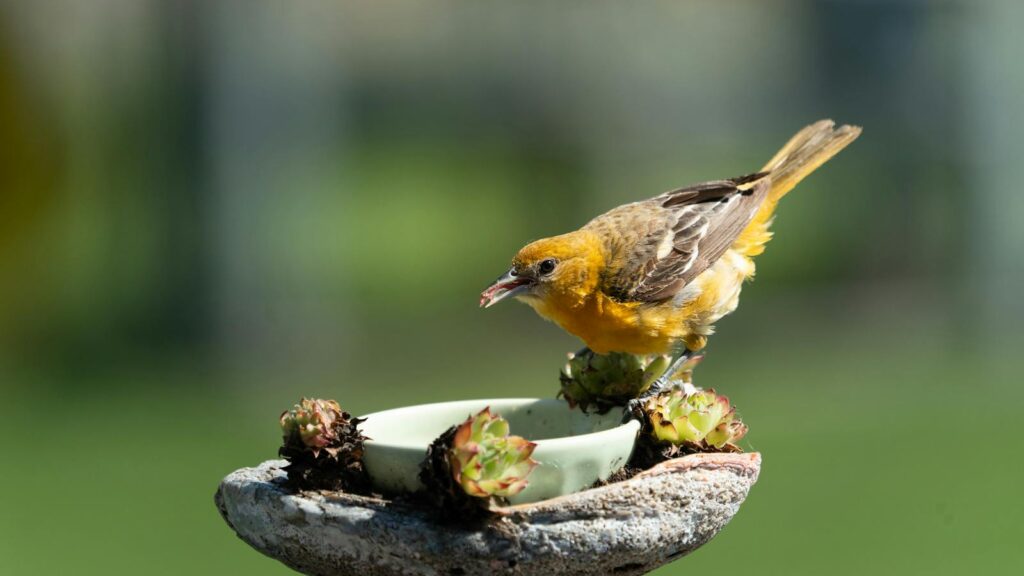
Commercial hummingbird nectars often contain red dyes and preservatives potentially harmful to orioles, making homemade nectar a safer alternative. The ideal nectar solution mimics natural flower nectar with a simple ratio of one part white granulated sugar to four parts water, thoroughly dissolved without boiling the mixture excessively. Never substitute honey (which can promote dangerous fungal growth), brown sugar (containing molasses that birds can’t properly digest), or artificial sweeteners (offering no nutritional value). Refrigerate unused portions for up to two weeks, but discard and replace feeder nectar every 2-3 days in warm weather or if it appears cloudy, which indicates bacterial growth. This simple, preservative-free mixture provides orioles with clean energy without unnecessary additives or colorings.
Offering Appropriate Fruits Safely
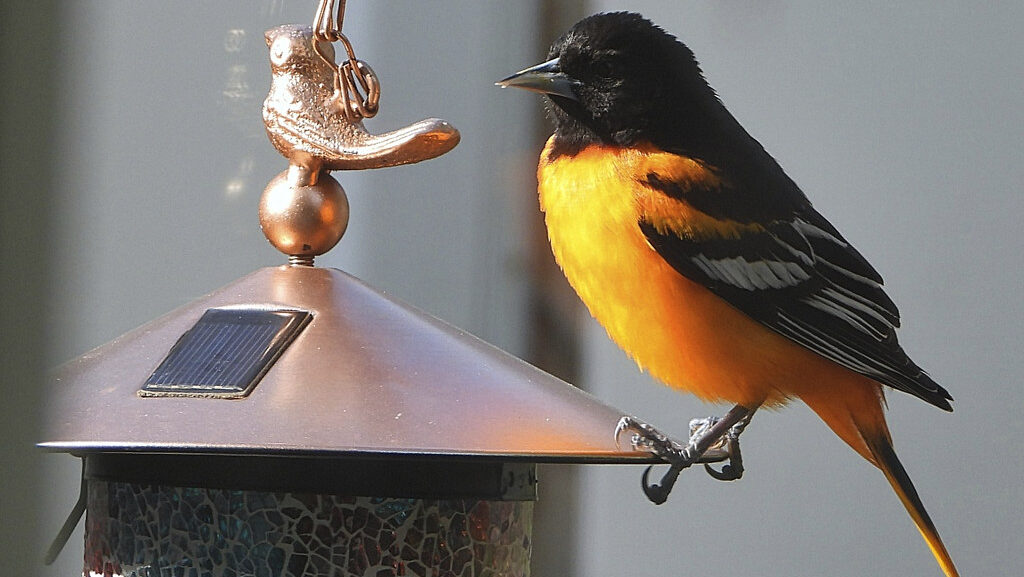
Fruits constitute a significant portion of orioles’ natural diet, with certain varieties proving particularly attractive and nutritious. Fresh orange halves, secured on spike feeders or platform surfaces, serve as both visual attractants and nutritious treats. Other oriole favorites include grape halves, chopped apples (seeds removed), and berries such as blueberries, blackberries, and raspberries. Always remove seeds from stone fruits like cherries and plums, as these can contain compounds toxic to birds. Replace fruit offerings daily, especially in warm weather, to prevent fermentation which can cause alcohol poisoning in birds. Avoid processed fruits containing added sugars, preservatives, or artificial flavorings, instead prioritizing fresh, organic options whenever possible.
Providing Protein Sources During Nesting Season
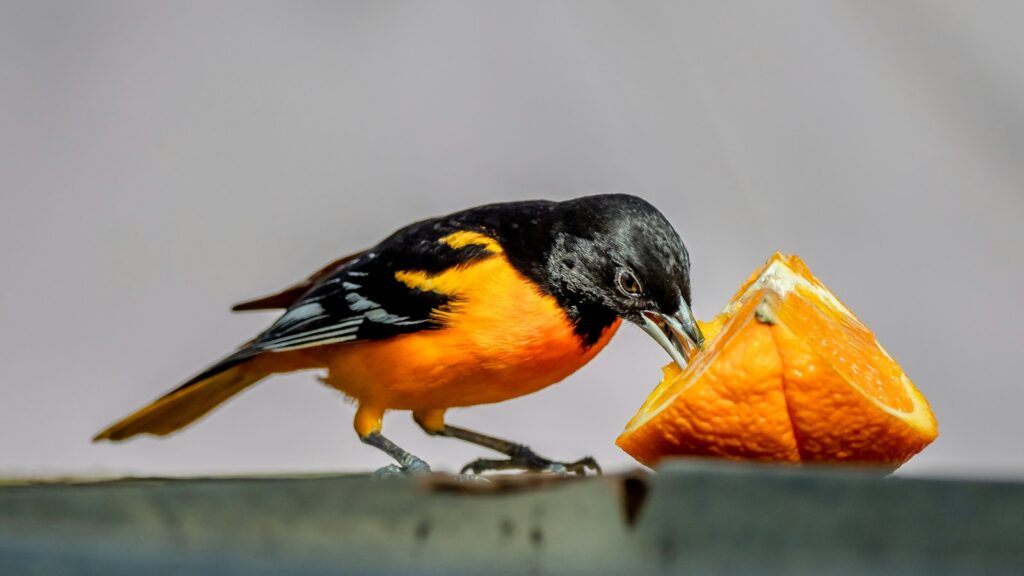
During breeding season, orioles require substantial protein to support egg production and feeding hungry nestlings. While insects comprise their natural protein source, birdwatchers can supplement with several safe alternatives. Mealworms offer excellent nutrition and appeal strongly to orioles, with live varieties proving most attractive though dried versions provide a convenient alternative. Small amounts of plain, unsalted peanut butter (no xylitol, which is toxic to birds) smeared on bark or specialized feeders also provides valuable protein and fats. Some orioles readily accept small pieces of plain cooked egg white or specialized commercial oriole protein products developed specifically for insectivorous birds. Providing these protein sources from April through July particularly supports successful breeding efforts.
Maintaining Proper Feeder Hygiene
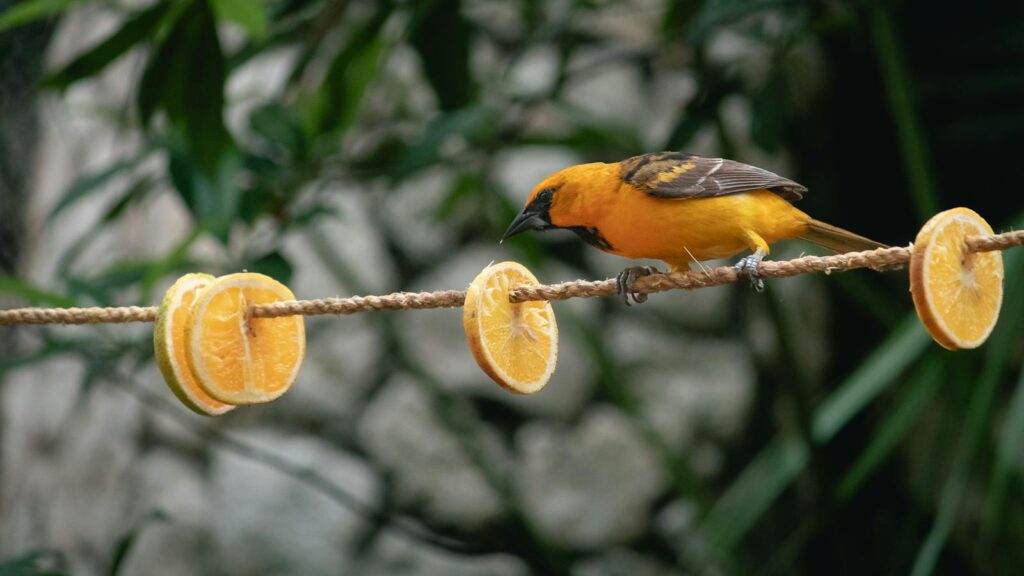
Clean feeders represent the single most important factor in preventing disease transmission among orioles and other backyard birds. Establish a rigorous cleaning schedule, disassembling and thoroughly cleaning all feeders at minimum twice weekly during warm weather and weekly during cooler periods. Use a solution of one part white vinegar to four parts water for cleaning, scrubbing thoroughly with bottle brushes to reach crevices where mold and bacteria accumulate. Rinse extensively with clean water until all vinegar odor dissipates, then allow feeders to dry completely before refilling. Pay particular attention to nectar ports and reservoir areas where sugar solutions leave sticky residues ideal for bacterial growth. This consistent maintenance prevents the spread of diseases like avian conjunctivitis and salmonellosis that can devastate oriole populations.
Avoiding Harmful Food Additives
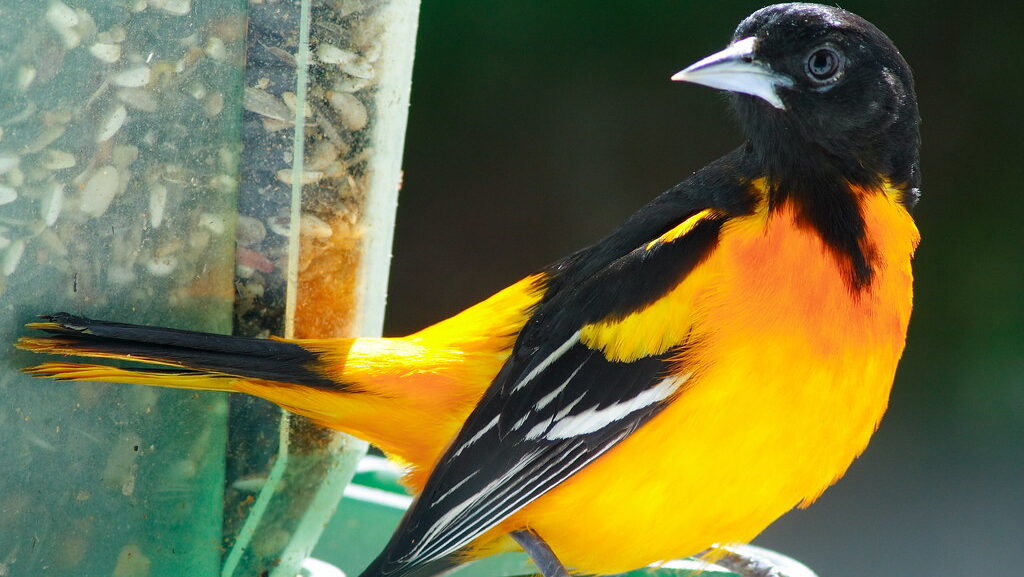
Many common food additives and ingredients can pose serious health risks to orioles, necessitating careful selection of feeding options. Red dye, frequently found in commercial nectar products, offers no benefit to birds while potentially causing kidney and liver damage with prolonged exposure. Artificial preservatives, common in prepared fruits and commercial bird foods, may accumulate in birds’ systems with unknown long-term effects. Salt proves particularly dangerous even in small amounts, disrupting birds’ electrolyte balance and potentially causing fatal dehydration. Always check ingredient lists carefully, avoiding commercial products containing artificial colors, preservatives, or excess sodium, and never offer human foods containing chocolate, caffeine, or alcohol—all toxic to birds even in minimal quantities.
Strategic Feeder Placement for Safety
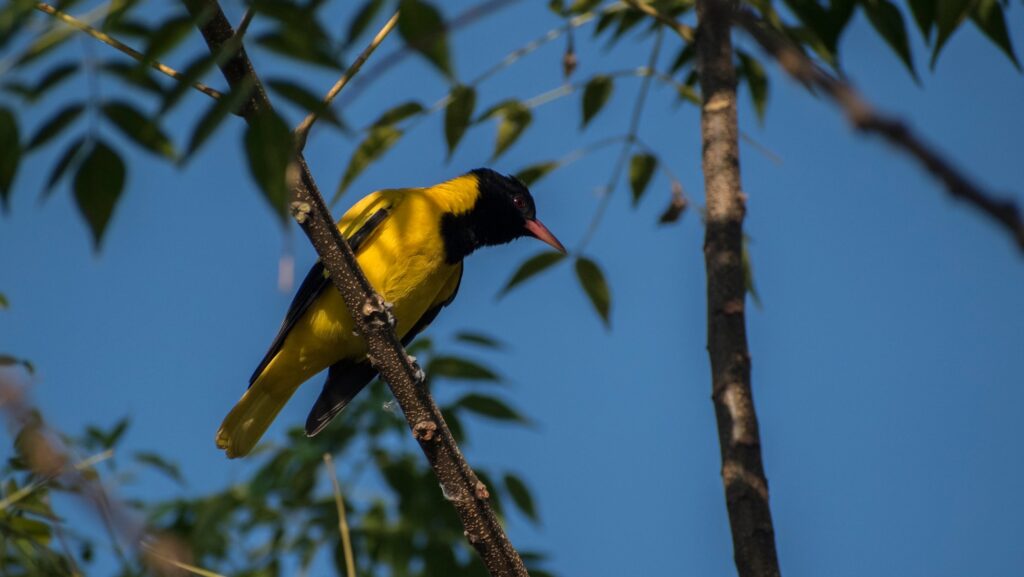
Proper feeder placement significantly impacts oriole safety, influencing their vulnerability to predators and environmental hazards. Position feeders at least 10-12 feet from windows to reduce collision risks, or alternatively within 2-3 feet where birds cannot gain sufficient momentum for fatal impacts. Install feeders in locations providing nearby natural cover such as shrubs or trees where orioles can quickly retreat from threats, but maintain sufficient distance (about 10 feet) to prevent ambush predators like cats from using these same areas for hunting. Hang feeders at least seven feet above ground level with predator baffles to deter climbing predators, and consider using monofilament fishing line strung above feeding areas to discourage hawks and other aerial predators. Additionally, position feeders away from areas treated with pesticides or herbicides that could contaminate food sources.
Managing Competitive Bird Species
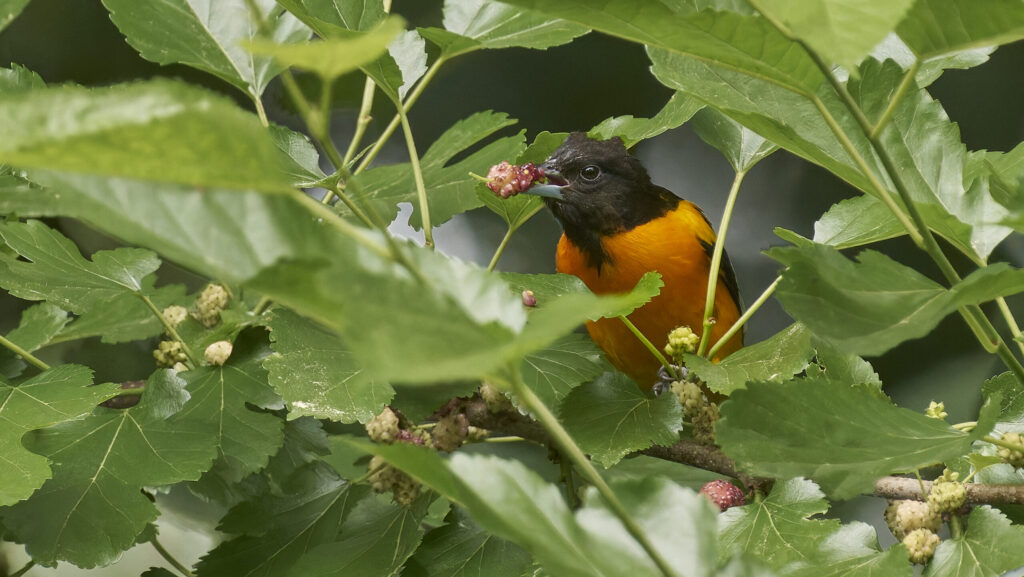
Orioles often face fierce competition at feeders from more aggressive bird species, potentially deterring them from returning to your feeding stations. European starlings, common grackles, and blue jays frequently dominate feeding areas through aggressive behaviors and their larger size. Address this competition by using oriole-specific feeders with ports sized for oriole bills but too small for larger birds. Cage-style feeders that allow entry to oriole-sized birds while excluding larger species provide another effective solution. Consider establishing multiple feeding stations spaced throughout your property to reduce territorial conflicts, and adjust feeding schedules to capitalize on orioles’ tendency to feed earlier in the morning than many competing species. These management strategies help ensure your target birds receive adequate nutrition without excessive stress.
Seasonal Feeding Adjustments
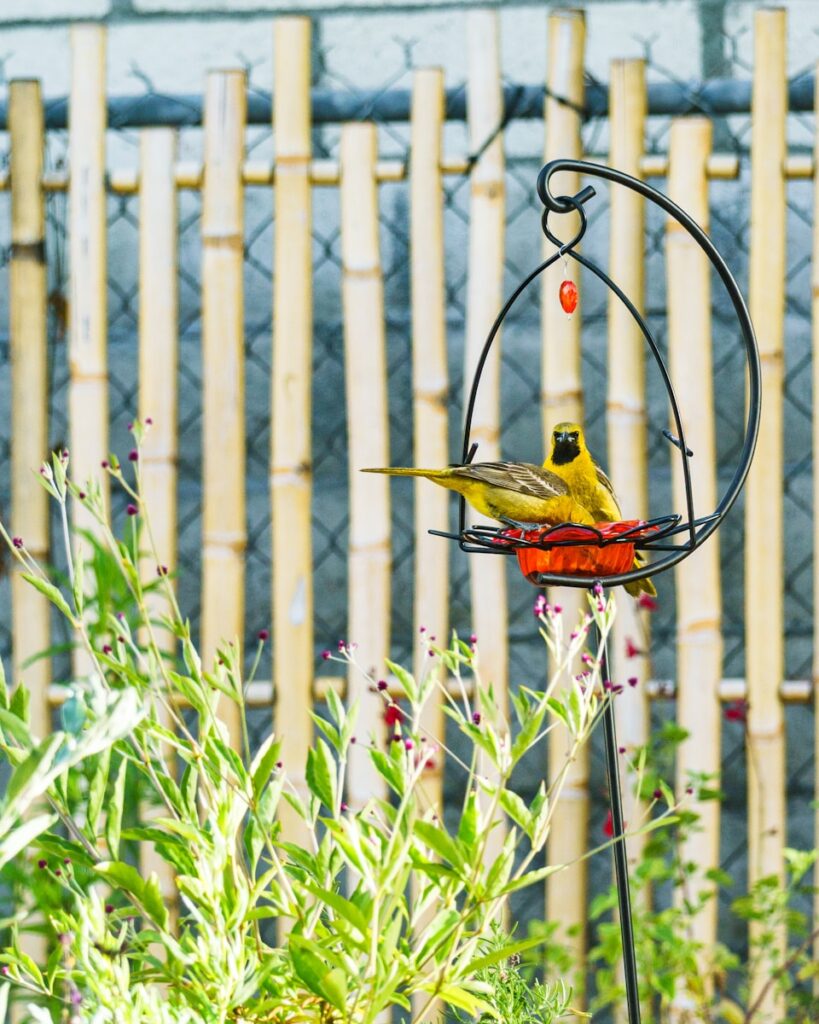
Oriole feeding should adapt to seasonal changes in the birds’ natural behaviors and nutritional requirements. In early spring (April-May), emphasize orange halves and nectar to attract migrating orioles establishing territories, gradually transitioning to increased protein offerings as nesting begins. During peak breeding season (May-July), maintain high levels of protein-rich foods while continuing nectar and fruit options to support adults feeding nestlings. As summer progresses into fall (August-September), increase jelly and fruit offerings to help birds build fat reserves for migration. In most regions, completely remove feeders by late September or early October to avoid delaying migration, as keeping feeders active too long can entice birds to remain beyond safe migration windows. These seasonal adjustments mirror orioles’ changing natural diet, supporting rather than disrupting their biological cycles.
Responsible Grape Jelly Feeding Practices
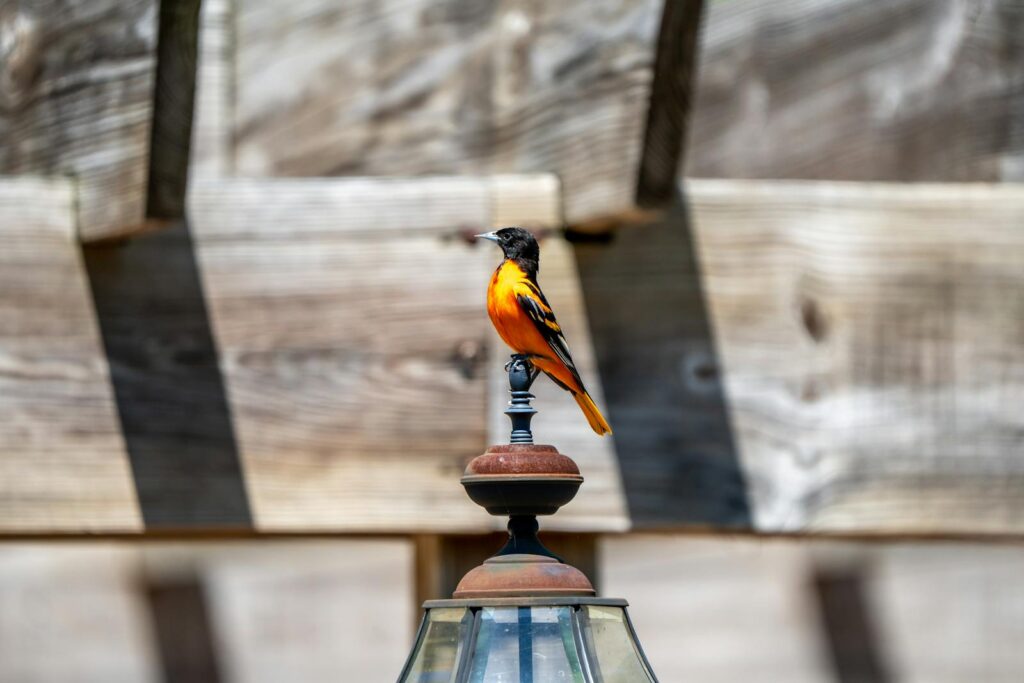
Grape jelly ranks among orioles’ favorite supplemental foods, yet requires specific precautions to prevent potential harm. Offer only small quantities (one to two tablespoons) daily, preventing overreliance on this high-sugar, low-nutrition food source. Select commercial jellies containing real fruit with minimal additives, or prepare homemade versions using grapes and minimal sugar. Use specialized jelly feeders with small cups rather than open dishes to prevent birds from becoming sticky and compromising feather integrity. Position jelly feeders away from direct sunlight to prevent rapid fermentation, and clean jelly cups daily regardless of whether they appear empty, as residual jelly quickly harbors harmful bacteria. When implemented responsibly, jelly feeding can safely attract orioles without compromising their health or natural foraging behaviors.
While appropriate feeding practices certainly benefit orioles, truly supporting these magnificent birds requires a more comprehensive approach. Beyond feeders, consider planting native fruit-bearing trees and shrubs such as serviceberry, mulberry, and wild cherry that provide natural food sources. Incorporate nectar-producing flowers like trumpet vine, bee balm, and cardinal flower to attract the insects orioles depend on while offering supplemental nectar. Maintain pesticide-free gardening practices that preserve the insect populations critical to oriole breeding success. Provide clean water sources for drinking and bathing, essential for feather maintenance and hydration. By combining responsible feeding with habitat enhancement, you create an environment that not only attracts orioles but genuinely supports their complete life cycle, contributing meaningfully to oriole conservation while enriching your birdwatching experience.
